Greetings, Calontir!
The March Letter of Acceptances and Returns was published on Friday, May 3rd. Here are the results for Calontir:
CALONTIR acceptances
Georgette Durning. Device. Purpure, a tyger sejant contourny argent.
This device does not conflict with the badge of Temair ingen Muiredaich, Purpure, a fox sejant contourny argent within a bordure ermine nor with the badge of Yuri Murasaki, Purpure, a fox sejant to sinister maintaining a lily affronty slipped and leaved argent. In each case there is a DC for removing the secondary charge, and there is at least a DC between a fox and a tyger.
This device also does not conflict with the device of Sabine d’Orliens, Purpure, a cat sejant contourny argent in chief three fleurs-de-lys Or, the device of Isabella Hawke, Purpure, a natural panther sejant contourny between three hawk’s legs erased à la quise belled and jessed argent, or the device of Siobhán ingen Tigernaich, Purpure, a natural tiger sejant contourny argent marked sable within a dragon involved in annulo head to chief Or. In each case there is a DC for removing the secondary charge group, and another DC for changing a feline to a tyger.
Havarr Refskegg. Device. Per pale wavy vert and argent, a stag’s attire palewise and an oak leaf counterchanged.
A stag’s attire defaults to fesswise with its stump to dexter. When palewise, it defaults to having its stump to base. We ask Palimpsest to add this information to Table 5 of the Glossary of Terms.
Helenos ben Simon. Name (see RETURNS for device).
Lucius Aternius Calidus. Name and device. Gyronny sable and Or, a torch gules and a serpent entwined argent.
Oddný Óttarsdóttir. Name change from Kenda Óttarsdóttir and device. Quarterly gules and sable, two otters statant counter-statant Or.
The submitter’s prior name, Kenda Óttarsdóttir, is released.
Nice cant!
Oddný Óttarsdóttir. Badge. (Fieldless) A sea-otter Or maintaining a drinking horn argent.
Nice cant!
Oddný Óttarsdóttir. Badge. Per chevron sable and gules, two ravens volant in chevron respectant argent and a boar rampant contourny Or.
Richard Wolfwood. Name and device. Or, a Bowen knot crosswise sable braced with an annulet vert.
This device does not conflict with the badge of Dianora Lizabetta di Cellini, (Fieldless) A Lacy knot within and conjoined to an annulet vert. Though by precedent [Úna inghean Shéamuis, 07/2004, A-Middle] there is no difference between a Lacy knot and a Bowen knot crosswise braced with an annulet, there is a DC for fieldlessness, a DC for changing the tincture of at least half of the primary charge, and a DC for removing the secondary annulet from Dianora’s badge.
This device also does not conflict with the device of Edana O’Donnelly, Or, a Donnelly knot sable. There is an SC for type between a Donnelly knot and a Bowen knot.
This device also does not conflict with the device of Elisabetta Camilla di Raffaello, Or, a knot of two hearts voided and braced to form a single cord azure. There is a DC for the tincture of the primary charge, and at least a DC between a knot of two hearts voided and braced to form a single cord and a Bowen knot.
Þióðrikr Ulfsbani. Name reconsideration from Þeodric Ulfsbani.
When we registered the name Þeodric Ulfsbani, we offered this form to the submitter. We are happy to accept this request for reconsideration!
Verena Näherin. Badge. (Fieldless) A winged dog passant maintaining in its mouth by the chain a morning star flail Or.
Submitted as a morningstar, there has been some confusion in terminology in our blazons, as a morningstar is actually a word for what we typically blazon as a spiked mace: a rigid weapon with no chain. The chained weapon is more accurately referred to as a type of flail. Going forward we will blazon this weapon as a morning star flail. Existing armory is reblazoned elsewhere on this letter.
Our last registration of this type of weapon was in 2015, so we take this opportunity to re-document this charge. The morning star flail appears to have been quite rare in period warfare, but examples can be found in period artwork, such as in the early 15th C “Livre des Merveilles du Monde” (BnF, Français 2810), ff. 245v and 253r.
CALONTIR returns
Helenos ben Simon. Device. Sable, on a sun Or an eye azure irised argent.
This device is returned for conflict with the badge of Leon de Asturias for House Cinqfoil, Sable, a cinquefoil azure en soleil Or. An examination of Leon’s badge shows it to be equivalent to Sable, on a sun Or a cinquefoil azure, so there is a single DC for changing the type of the tertiary charge.
In service,
Dorcas Saker


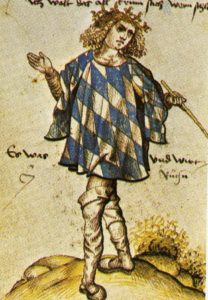
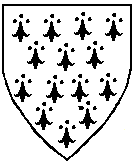
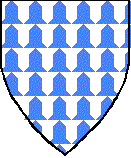 Vair is another fur, meant to mimic squirrel fur, and is traditionally blue and white, but can be done in other tinctures also. Furs obey the contrast rules, so you can have red ermined white, but not red ermined green.
Vair is another fur, meant to mimic squirrel fur, and is traditionally blue and white, but can be done in other tinctures also. Furs obey the contrast rules, so you can have red ermined white, but not red ermined green.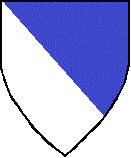
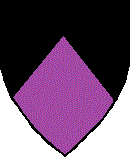
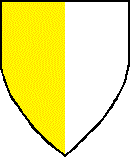

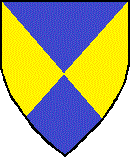










You must be logged in to post a comment.